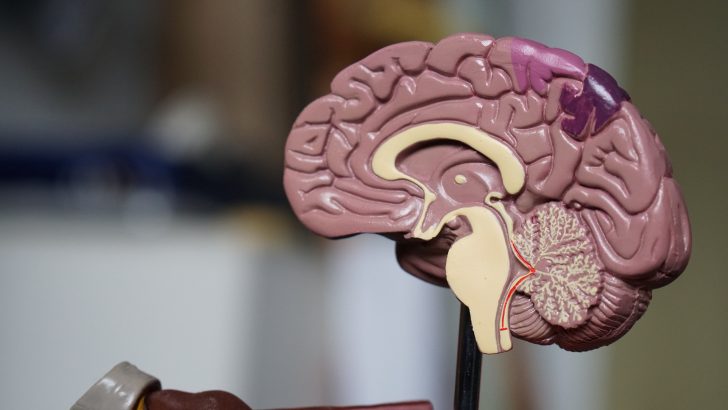New research suggests that the tell-tale signs of a stroke may be evident a decade before the life-threatening event, writes Chai Brady
On the island of Ireland, more than 13,000 people have a stroke every year. About 205 of these will die as a result of the stroke.
Time is of the essence, and medics have come up with a quick formula for those who suspect that someone has had a stroke – think FAST.
Face – is it drooped?
Arms – can they be lifted?
Speech – is it slurred?
Time – to call 999.
The traditional thinking has been that strokes happen without warning. However, scientists from Erasmus University in The Netherlands have now revealed people may experience a decline in cognitive function up to ten years before actually having a stroke.
The researchers also say that they may also struggle to wash, eat or keep on top of their finances.
Cognitive function
Stroke survivors often endure a persistent decline in cognitive function or find it difficult to look after themselves.
However, the scientists now say that changes within the brain may be “already present before a first-ever stroke”. And identifying those who could be more at risk may allow medics to administer preventative treatments.
Between 1990 and 2016, the participants in the research underwent tests that assessed their memory, speech and reaction times. Their ability to wash, eat, dress themselves and manage their finances was also investigated.
Up until 2018, the participants’ medical records were studied to tally the number of strokes that took place.
Each stroke patient was then matched against three healthy participants, according to their age and sex.
Results reveal a “clear difference” in the cognitive and daily functioning between the participants who did and did not later have a stroke.
The so-called Mini Mental State Exam – widely used to assess memory and dementia severity – threw up different results between the two groups up to eight years before a stroke.
The results of the Purdue Pegboard test – which assesses dexterity – and the Stroop task – measures the speed of mental processing – started to differ around nine and ten years before a stroke, respectively.
Stroke
The stroke patients’ ability to care for themselves and their finances declined up to three years ahead of the event, the results show.
Stroke is often considered a leading cause of death among men.
Carrying the APOE gene – associated with Alzheimer’s – and having fewer academic qualifications were also linked to a stroke, with both of these considered a marker of “cognitive reserve”.
The scientists have stressed the study was observational and therefore does not prove cause and effect. It is also unclear what type of stroke the patients had or how severe the event was.
Nevertheless, the scientists wrote: “Our findings demonstrated future stroke patients start to deviate from stroke-free controls up to ten years before the acute event, suggesting individuals with cognitive and functional decline are at a higher risk of stroke and are possible candidates for prevention trials.
“The accelerated decline in cognition and daily functioning before stroke suggests individuals with future stroke suffer from accumulating intracerebral [within the cerebrum in the brain] damage years before the acute event, such as cerebral small vessel disease, neurodegeneration, and inflammation,” they said.
In Ireland, the average age which someone will have a stroke is 74, though about 30% affect those under 65.
Geriatric medicine
Dr Kevin McCarroll is a consultant physician in geriatric medicine at St James’s Hospital in Dublin and a columnist with The Irish Catholic. He says that “while stroke can lead to severe disability and is the third leading cause of death in Ireland, a significant proportion of stroke survivors continue to lead active lives”.
About 85% of strokes occur when a clot blocks off an artery in the brain cutting off blood supply and thereby causing brain damage. The remaining 15% result from a haemorrhage into brain tissue when a blood vessel ruptures.
According to Dr McCarroll, “the extent of disability after a stroke varies hugely depending on its location and size. Some strokes are quite small and recovery can be quick, within days.
“Some of the biggest risk factors for stroke are high blood pressure, smoking, diabetes and high cholesterol which all cause the build-up of plaque on the arteries supplying blood either to or within the brain.
“As well as causing narrowing of these vessels, they can become acutely blocked when a plaque ruptures leading to a clot forming, so it is important to keep a close eye on your blood pressure and cholesterol and avoid smoking. Watch out too for your alcohol intake, as in excess it is also a risk factor for haemorrhagic strokes,” according to Dr McCarroll.
Another cause, which accounts for about a third of all strokes is atrial fibrillation – a type of irregular heartbeat. This causes clots to form in the heart which can embolise and block arteries in the neck or brain. Atrial fibrillation occurs in about 10% of those aged over 65 and can also happen intermittently.
Dr McCarroll says that many people are not aware of having an irregular heartbeat, yet treatment with blood thinning medications can reduce the risk of stroke by about 70%. “For a long time warfarin was the main drug used, but there are now several newer medications which are equally as effective but have a more predictable response and need less monitoring.
“Most importantly, if you ever get symptoms or signs suggestive of a stroke then you should go immediately to the hospital,” Dr McCarroll warns.
He says that “Clot busting drugs can be delivered in the hospital (thrombolysis) within 4.5 hours of having stroke signs or symptoms provided certain other criteria are met. It can result in an improvement in about 35% of patients. In some cases, its benefits are so great that in its early days of use it was described as the ‘Lazarus effect’!”
Last year about 11% of strokes that presented to hospital in Ireland received clot-busting drugs. But time is of the essence, as every minute millions of brain cells are dying so it is vitally important to get to the hospital as early as possible.
The effects of stroke vary hugely along a spectrum from minimal loss of power or sensory function to more severe disability and/or death”
Dr McCarroll is acutely aware that when it comes to health concerns in later life, “there are few others than stroke that conjure up as much fear.
“In truth, while stroke is the leading cause of acquired physical disability in Ireland, the outcome for many with stroke is very good and has improved in recent years due to more coordinated stroke care and modern medical advances.
“Stroke should no longer be considered as a condition that inevitably leads to severe disability, and indeed a sizeable proportion of stroke survivors continue to live active lives,” Dr McCarroll insists.
The effects of stroke vary hugely along a spectrum from minimal loss of power or sensory function to more severe disability and/or death.
This, according to Dr McCarroll, depends largely on both the size and location of the area of damage in the brain.
Loss of power or sensation in the limbs, impairment of co-ordination or perception, balance, speech, vision and swallow problems are common after stroke. Some degree of cognitive decline is usually apparent, but for some may be very minimal.
According to Dr McCarroll, recent advances in interventional radiology also now mean that clots can be physically retrieved from arteries under minimally invasive techniques guided by x-ray.
“While still an evolving area, promising results from a recent study now mean that it is likely to become part of our standard treatment for carefully selected stroke patients in the future,” he says.
Some stroke presentations will be self-resolving and are called mini-strokes or TIA’s (transient ischaemic attacks).
Disabling condition
“They are however, harbingers of potential future strokes and should always prompt a full medical workup for potential causes, particularly atrial fibrillation and narrowing of the carotid arteries in the neck (which is amenable to surgery),” Dr McCarroll warns.
In summary, outcome for strokes are continuing to improve and for many it is not the once thought of disabling condition that it used to be. Experts say that identifying and addressing risk factors adequately will go a long way in reducing stroke incidence.
The research from The Netherlands will likely put fresh focus on just how early therapy to stop a stroke can begin.


 Chai Brady
Chai Brady